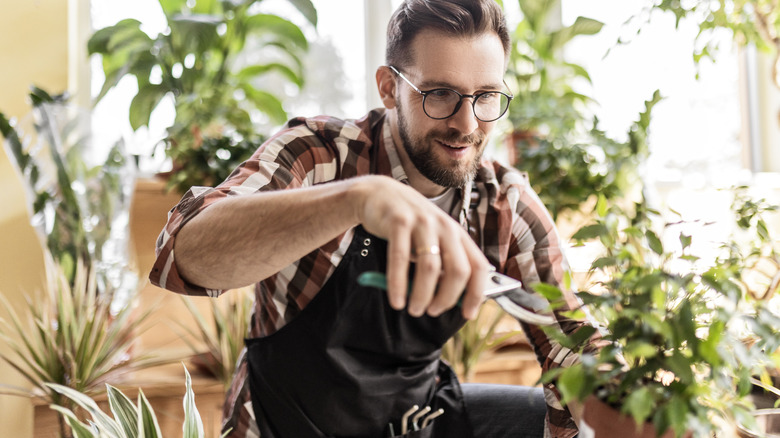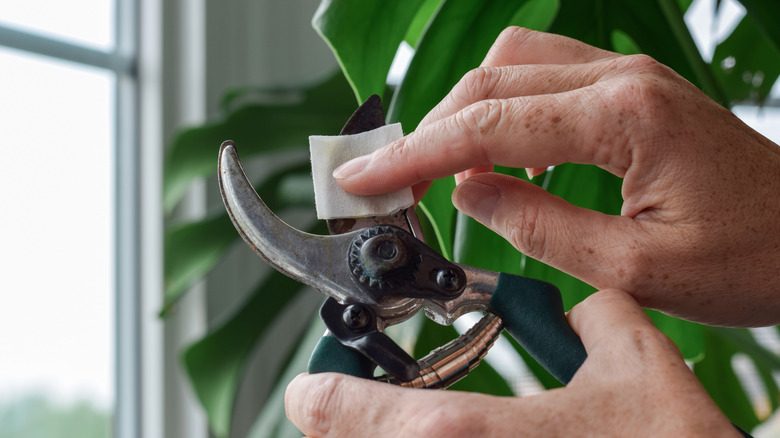The Mistake Too Many People Make When Propagating Plants
There's nothing quite as satisfying as propagating new plants from ones you already have in your home and garden. It's a fantastic way to increase your collection at a fraction of the cost of buying established plants from a nursery or garden center. But sometimes it can be a bit of a hit or miss exercise where some of your cuttings will end up producing roots, and others will simply just rot and die. Although even professional propagators who have been working in the industry for years will also have failures, there's one common mistake you don't want to make to have the best chance of success. As important as always propagating your plants in sand or another sterile soilless mix, you should never use dirty tools.
This is one of the most important lessons taught in horticultural classes around the world. If you want to limit the spread of fungal and bacterial diseases, you have to ensure the tools you're using are scrupulously clean before you start taking and preparing your cuttings. In fact, it's the first thing that professionals will do at the beginning of their workday, and it's something you can get into the habit of doing yourself. Apart from cleaning your tools before any propagation tasks, you might also want to follow some general maintenance tips to keep garden shears in tip-top condition at all times.
How to ensure your tools are immaculately clean every time
Whether you use a pair of pruning shears or a sharp knife to take your cuttings, before you even put that tool anywhere near your plants, dip the blades into either some rubbing alcohol or a diluted bleach solution made with nine parts water and one part bleach. This will kill any pathogens that might be present on the blades, which could be transmitted to the cuttings you're preparing. Make sure you use the same procedure to sterilize any other tools you might be using, such as the trowel to fill the pots and the dibber or pencil you use to make the holes for the cuttings. If you're reusing old plant pots or seedling trays, these should be washed in a bleach solution, rinsed, and dried before you fill them with your chosen propagation mix.
Similarly, it's important to only take cuttings from healthy plants that are not showing any signs of disease. Plus, you want to make sure your cutting tools are sharp so that you can make a nice clean cut without squashing the stems. Another hygiene tip to remember if you're using rooting hormone is to put a small amount of the solution or powder into a separate receptacle prior to dipping the stems of your cuttings. Never dip them straight into the main container because this could introduce pathogens into the mixture, contaminating it. As a final tip, you might be interested in learning how hydrogen peroxide can breathe new life into your beloved garden tools.

